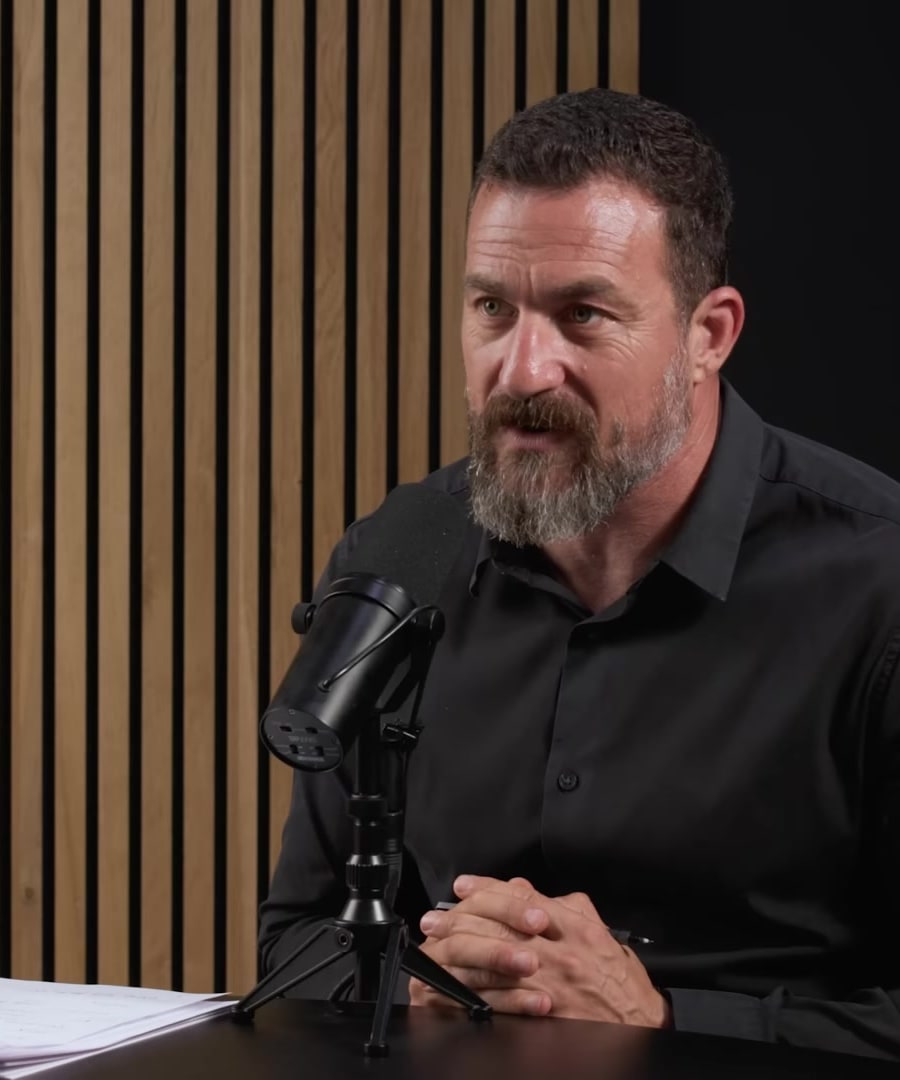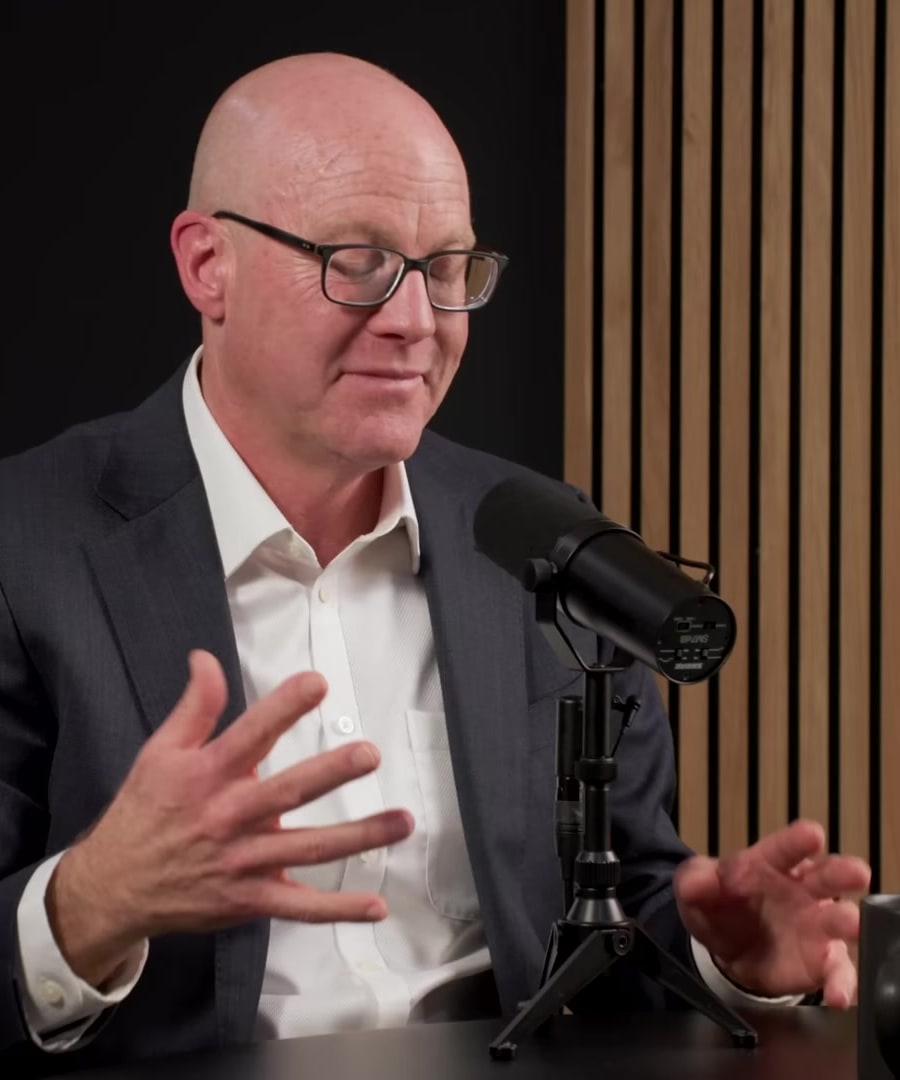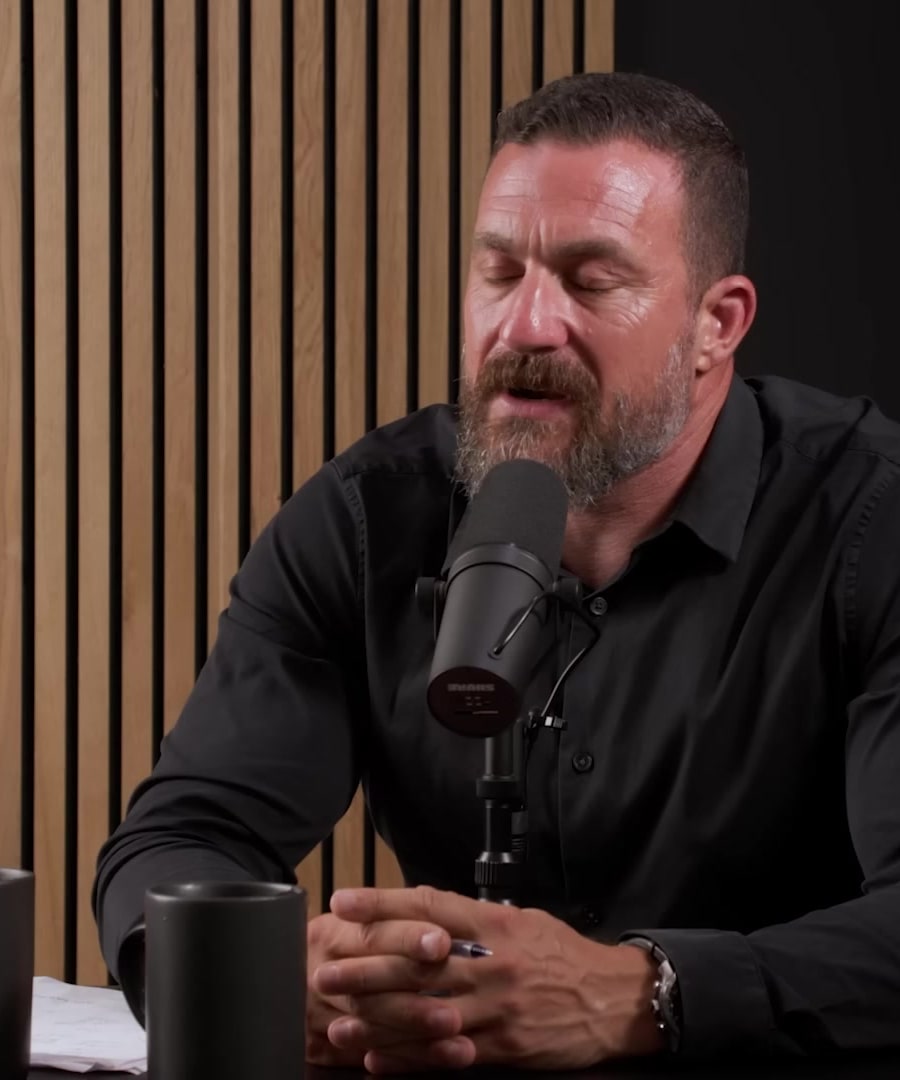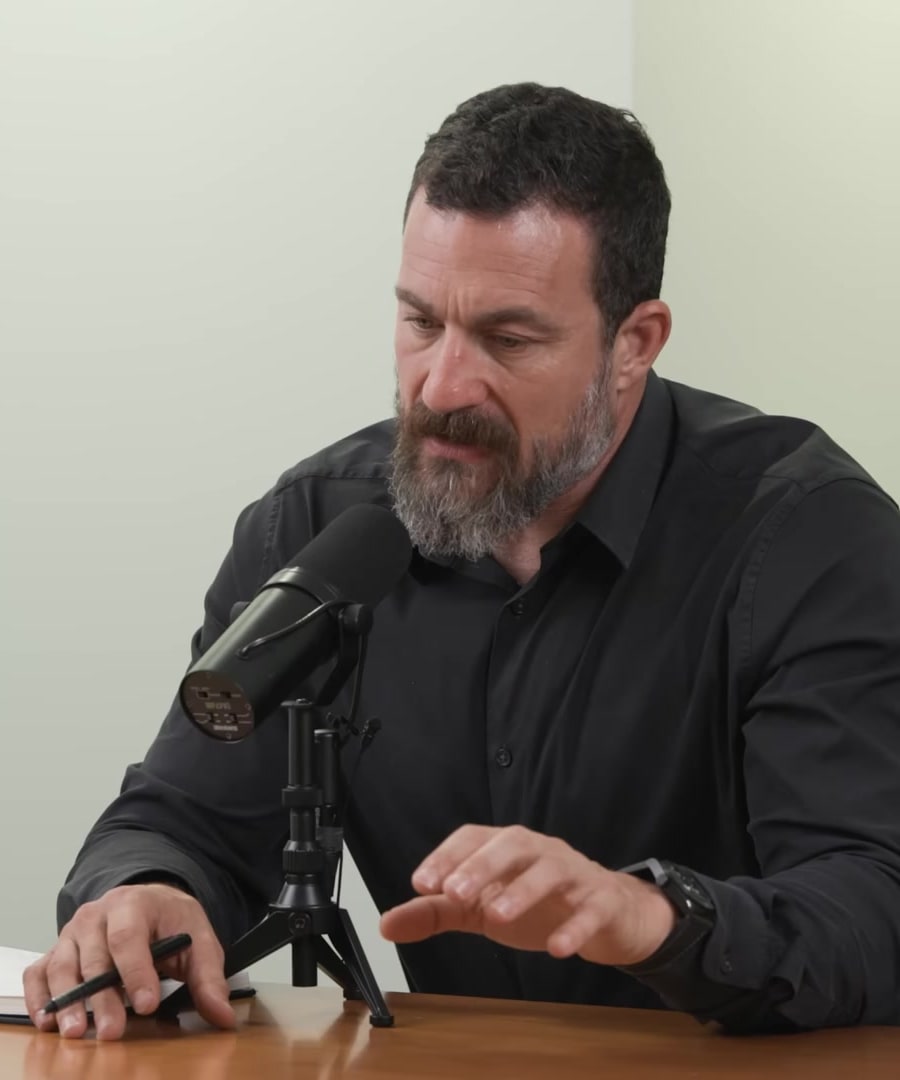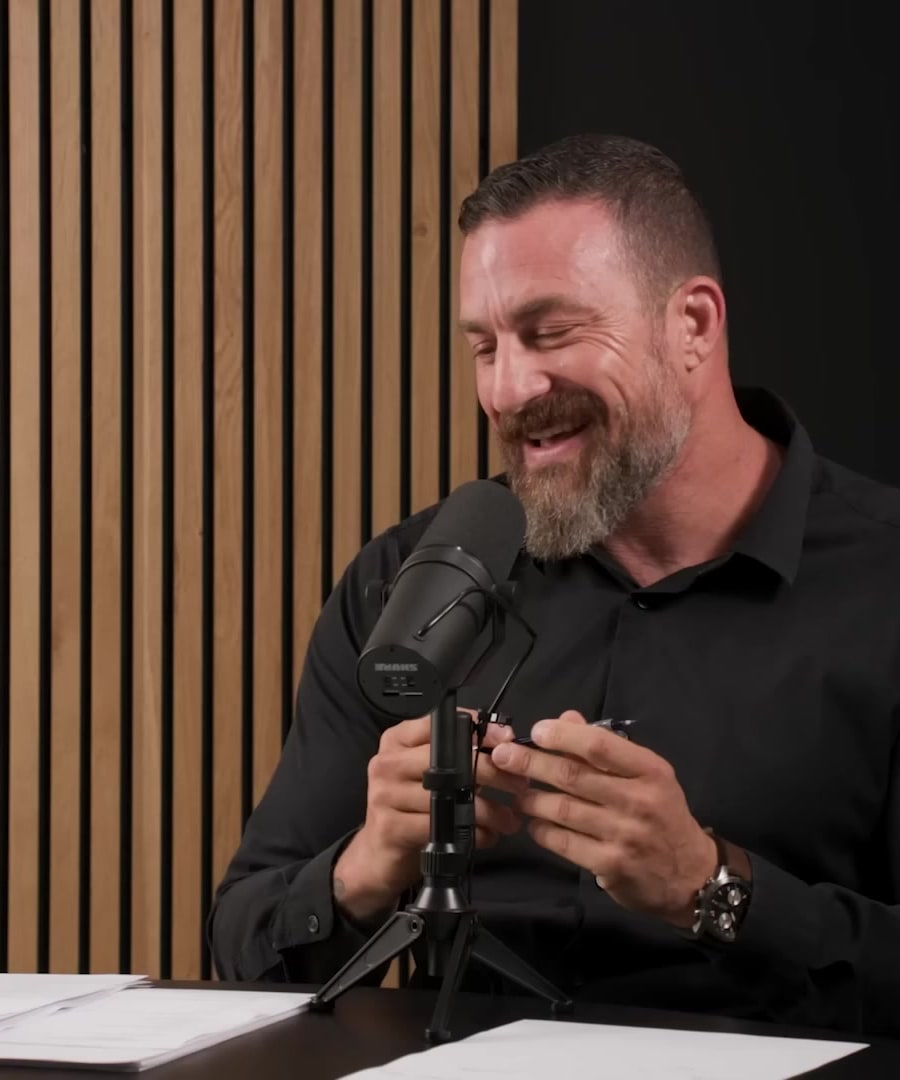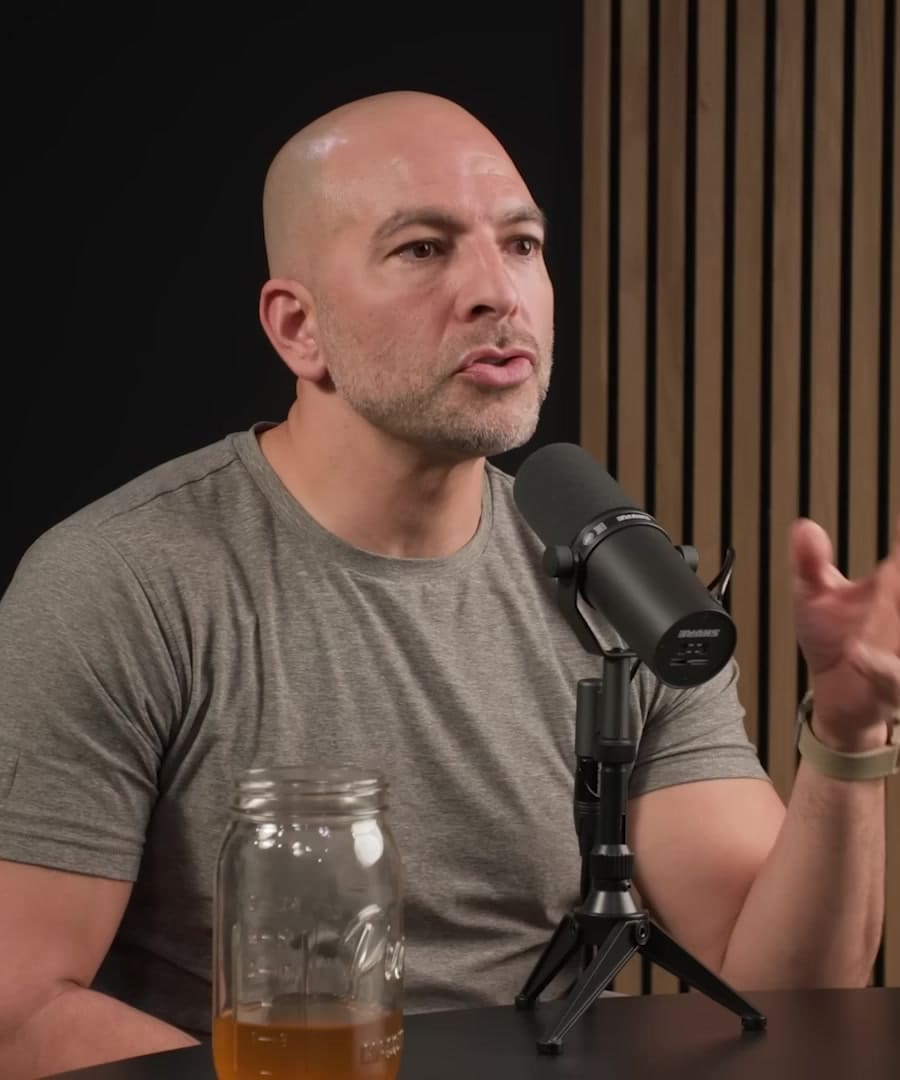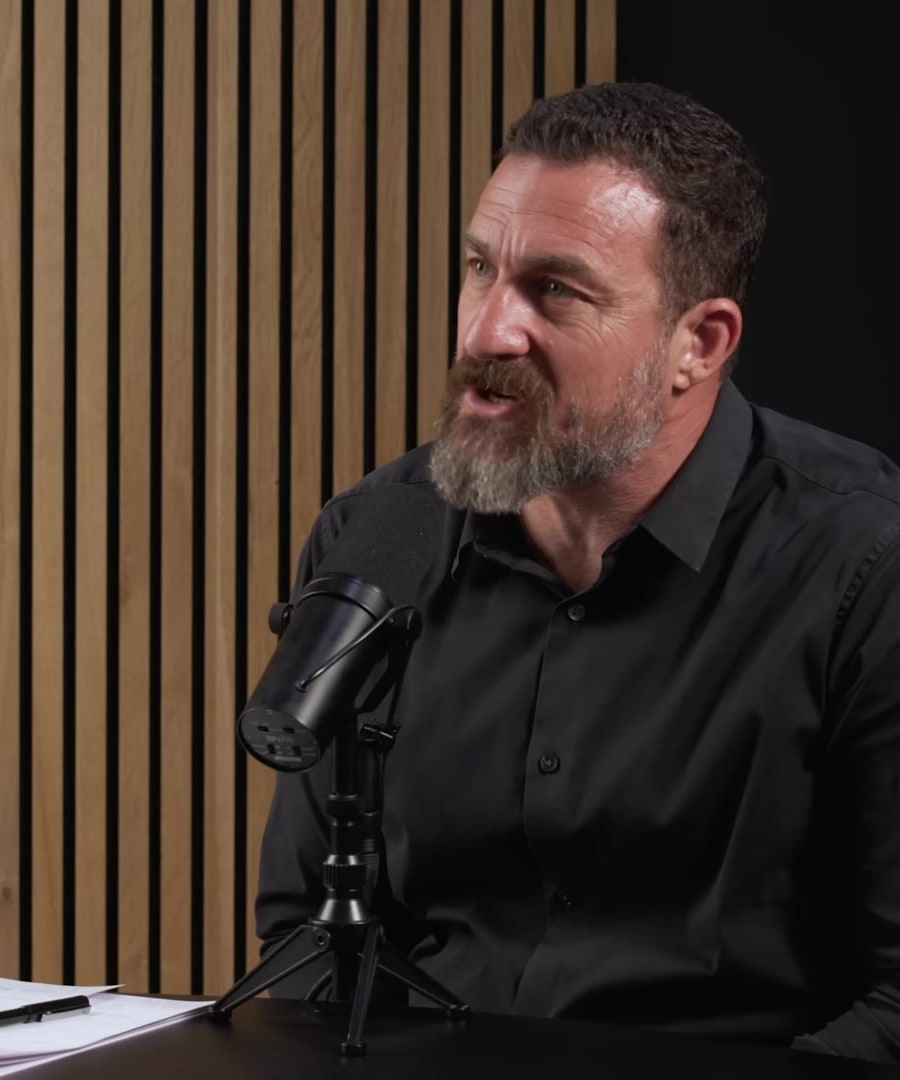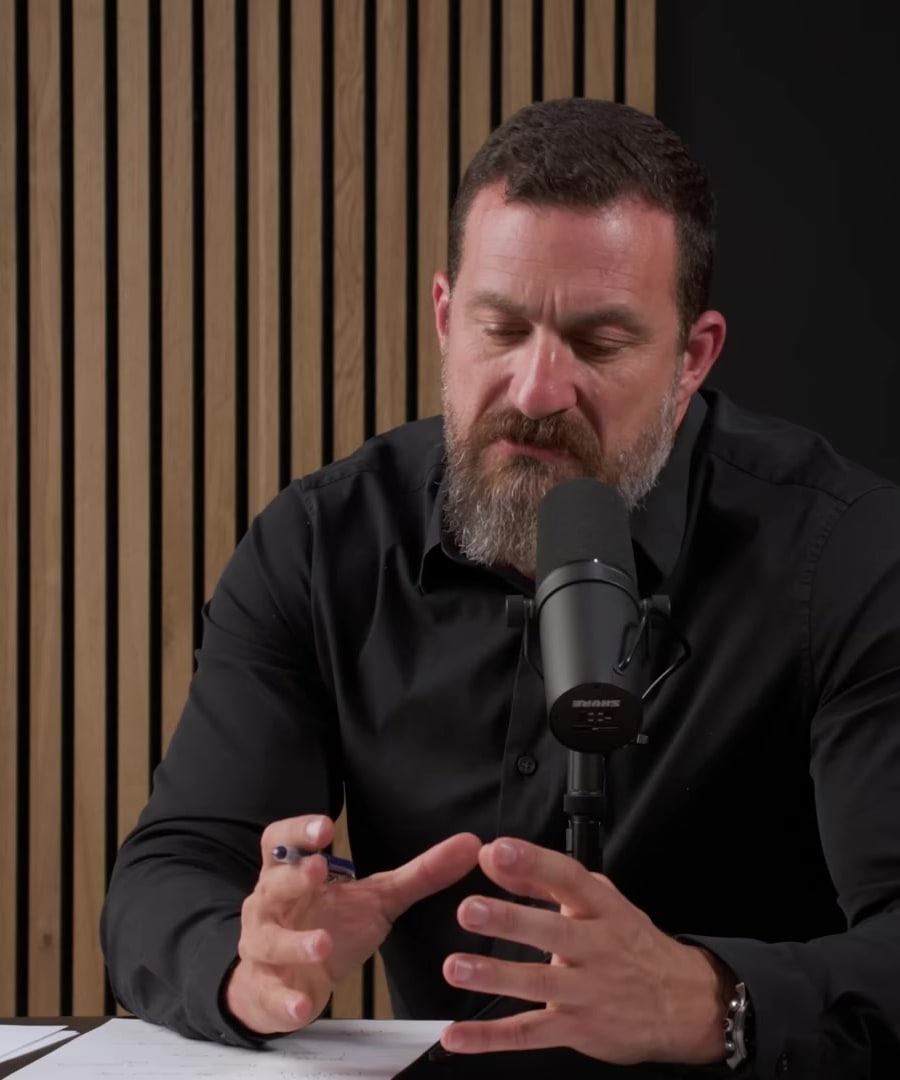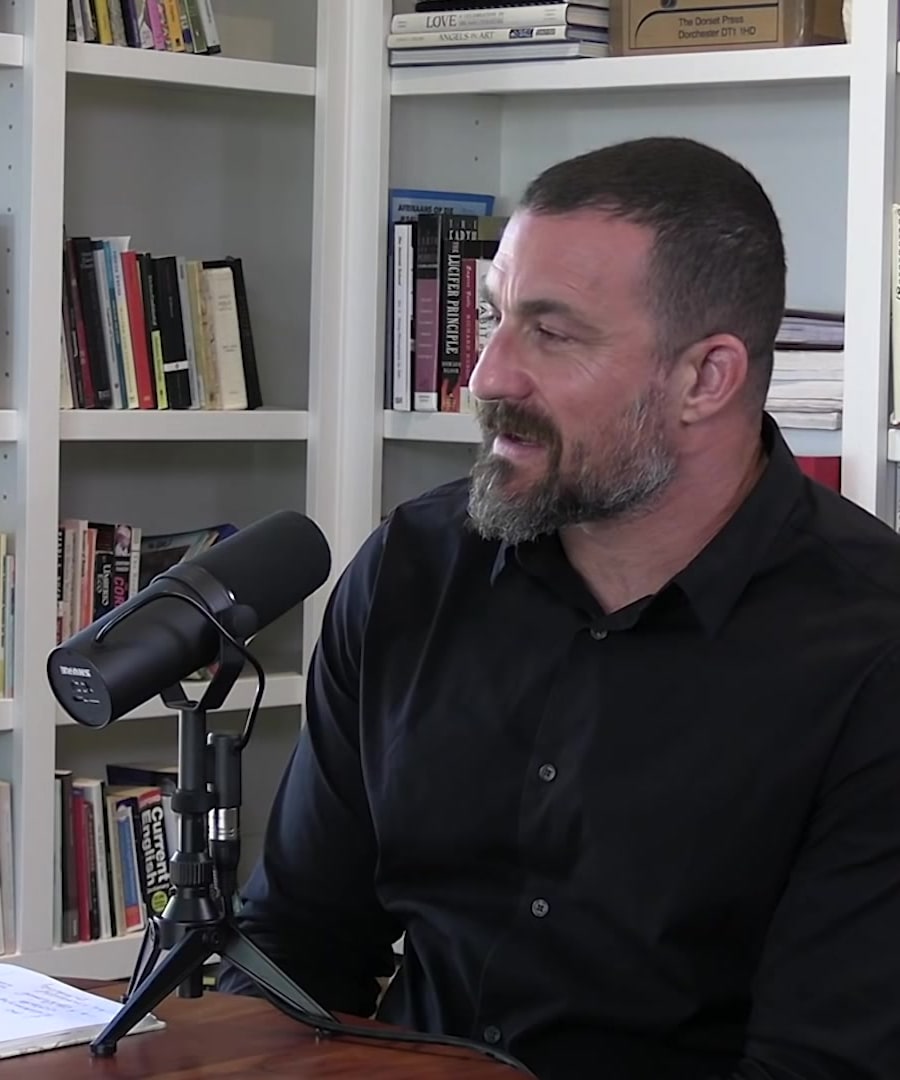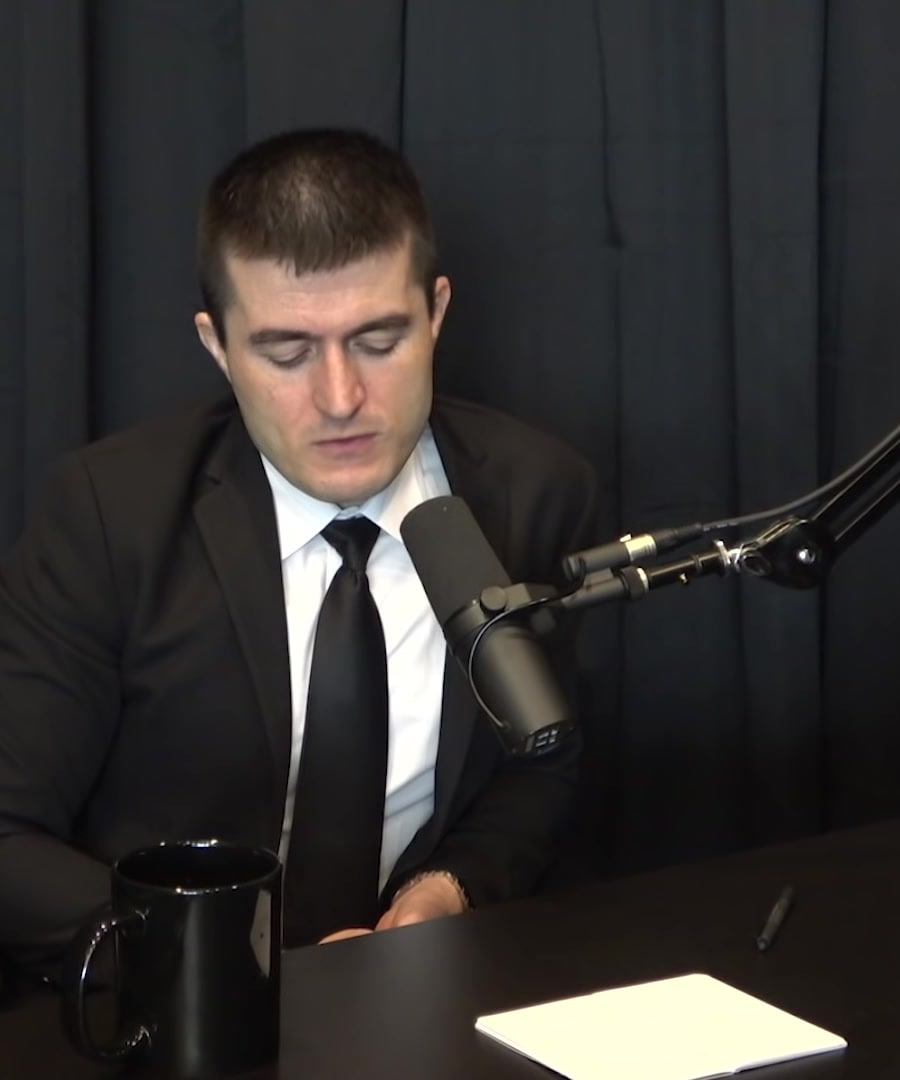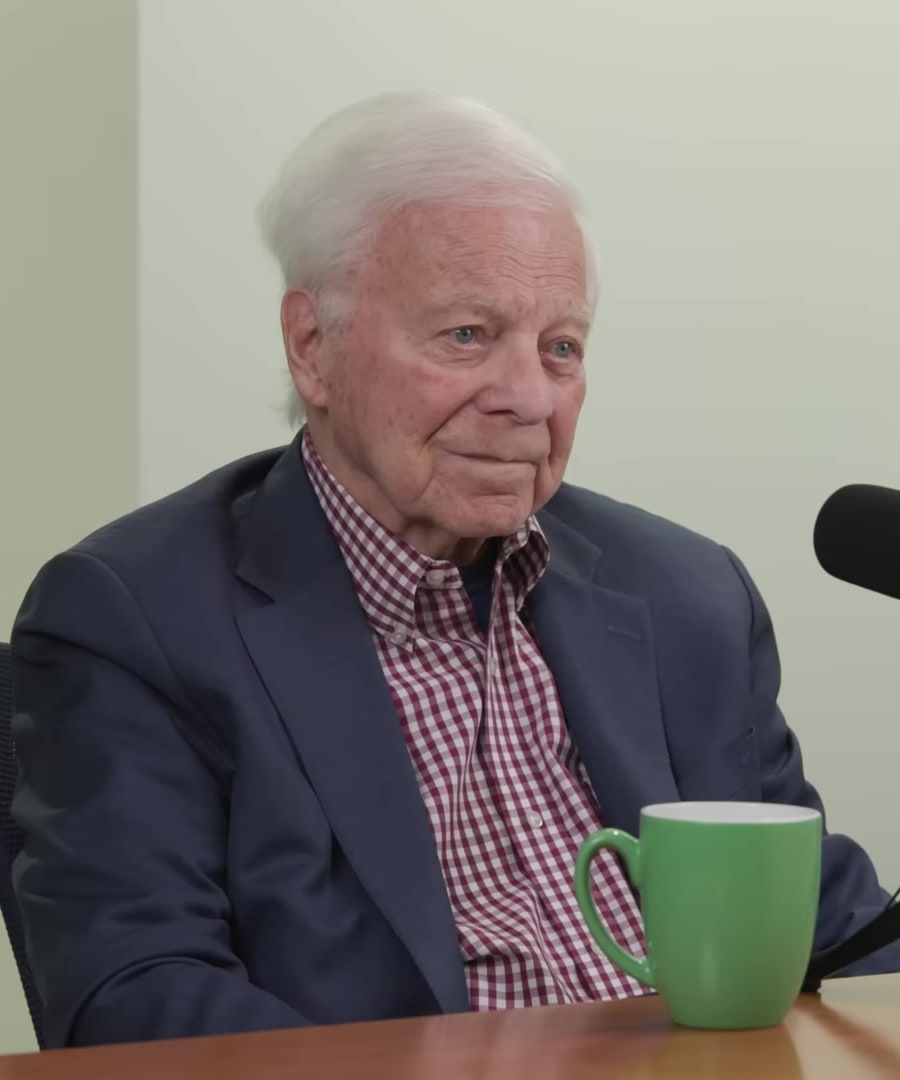Disappointment in relationships
Sources:
discusses disappointment in relationships by explaining the role of the habenula, often called the "disappointment nucleus." This brain structure inhibits the dopamine-producing reward circuit, impacting mood and feelings of happiness. Triggering this structure can lead to feelings of disappointment and even depression 1 2.
adds that managing disappointment involves building emotional regulation skills, especially in children. Instead of reacting harshly, it's better to model desired behaviors and provide opportunities to practice managing disappointment effectively 3.
RELATED QUESTIONSWho else discusses relationship disappointment?
Sources:
Another person who discusses disappointment in relationships on the is . She emphasizes the importance of teaching emotional regulation to children. This involves modeling desired behaviors and providing opportunities for practice so that kids learn how to manage disappointment effectively. She highlights the need for parental support in helping children navigate these feelings, rather than reacting harshly to their emotional expressions 1.
RELATED QUESTIONSGetting hurt in romantic relationships
Sources:
Getting hurt in romantic relationships is discussed by and in a episode. shares his personal experience, noting that suffering often results from the love and care he feels for others, which makes ending relationships extremely painful. He struggles with holding two incompatible truths: deeply loving someone while acknowledging that separating is sometimes the loving, caring thing to do 1.
adds that people with big hearts may confuse love with self-abandonment, desiring their beloved's joy more than their own. The dialogue underscores that loss, whether through separation or death, is an inevitable part of life that requires acceptance and understanding 1.
RELATED QUESTIONSWhat are some tips to handle emotional pain in relationships?
Sources:
To handle emotional pain in relationships, and offer a few insights based on scientific research. Here are some tips derived from their discussions:
-
Distraction: Engaging in attention-demanding tasks can significantly reduce the perception of pain. Distracting yourself with activities that require focus can help mitigate emotional distress 1.
-
Leverage Love: Looking at a photo or thinking about someone you love, including a pet, can reduce pain. This effect is stronger if you're infatuated or deeply connected with the loved one 1 2. The intensity of love and obsession can modulate pain, providing substantial relief 2.
-
Understanding Pain Perception: Recognize that emotional and physical pain responses can be influenced by psychological states and cognitive patterns. Understanding that your mind plays a role in amplifying or reducing pain can empower you to seek mental strategies for relief 3.
-
Utilize Dopamine: Obsessive thinking about a new romantic partner increases dopamine levels, which can buffer against the pain response. Cultivating feelings of hope, excitement, and motivation associated with new or existing relationships can be beneficial 3.
Implementing these strategies may help in modulating and reducing the emotional pain experienced in relationships.
RELATED QUESTIONS-
What is self-abandonment in relationships?
Sources:
Self-abandonment in relationships refers to the condition where an individual prioritizes the needs and happiness of their partner over their own well-being, often at the cost of their own emotional and mental health. describes it as confusing love with self-abandonment, where the individual loves so deeply that they value the joy of their beloved more than their own joy. This can lead to a person sacrificing their needs and happiness to maintain the relationship, even when it is detrimental overall 1.
RELATED QUESTIONSDecisions by a romantic partner that one does not like. Frustration
Sources:
Dealing with frustration arising from a romantic partner's decisions that one does not like can be challenging. Insights from the can provide some strategies:
-
Effective Listening and Communication: emphasizes the importance of truly hearing and understanding a partner's emotions. When someone feels unheard, they may vent repeatedly, which can amplify frustration. Trying to recognize verbally the underlying causes of their frustration can help de-escalate the negative emotions more effectively 1.
-
Mutual Respect and Willingness to Engage: points out that when a partner refuses to engage in activities or discussions that are important to the other, it reflects a deeper relationship issue. Communication about mutual respect and understanding each other's needs is essential for resolving such conflicts 2.
-
Learning from Errors and Frustrations: notes that errors and frustrations can actually be beneficial by signaling to the brain that changes are needed. Embracing frustration as a part of the relationship can help both partners grow and adapt, improving the relationship over time 3.
Using these strategies can help navigate frustration and improve communication and understanding in a relationship.
-
Different opinions in relationships
Sources:
Handling different opinions in a relationship can be complex but beneficial for growth and mutual understanding. Here are some insights from the :
-
Embrace the Other's Perspective: highlights the importance of accepting the "otherness" of a partner. This acceptance can lead to personal growth and a deeper understanding of each other’s viewpoints, even if it sometimes results in conflict 1.
-
Constructive Dialogue and Sacrifice: Balancing compromise and standing firm on critical personal values is key. Relationships thrive when partners engage in genuine dialogue, respect each other’s integrity, and commit to the shared "project" of their relationship 1.
-
Third-Party Support: Seeking external help, such as a trained counselor, can be beneficial. suggests that having a third party who understands both partners can support the relationship in navigating conflicts and growing together 2.
-
Open Communication: Developing "classroom rules" for communication, where respectful discourse is encouraged and personal attacks are avoided, can help maintain a constructive environment during disagreements 3.
-
Agreeability vs. Disagreeability: notes that different personality traits, such as agreeableness or disagreeableness, can impact relationship dynamics. Finding a compatible partner who complements one’s traits or balancing differing temperaments can influence relationship success 4.
Adopting these principles can help in managing differing opinions and strengthen the partnership.
RELATED QUESTIONS-
Abondment of a romantic partner
Sources:
Abandonment by a romantic partner can be deeply distressing, and understanding and processing this experience is crucial for healing. offers several insights on coping with such grief and emotional pain:
-
Understanding Grief: When someone leaves, our brain maintains a “catalog” of experiences with them, and the associated attachment persists. Grief involves "uncoupling" these memories from our expectations of their presence, which can be disorienting and painful 1.
-
Moving Through Grief: It’s entirely normal to continue expecting the person to be where they used to be or to contact you as they did before. This phenomenon is based on the brain's persistence in making predictions about their presence 2. The process of grief requires “remapping” these expectations while maintaining the emotional attachment in a healthier context 2.
-
Setting Aside Time: One practical tool involves dedicating specific time to deeply connect with your feelings about the person, while consciously avoiding counterfactual thinking (the “what ifs”). This focused grieving helps process emotions without reinforcing unrealistic expectations or guilt 3.
-
Mind-Body Connection: For those struggling to move through grief, practices that enhance the mind-body connection, such as controlled breathing, can help. This can increase one's ability to access feelings of attachment in a regulated way, aiding in the grieving process 4.
-
Overcoming Trauma: Trauma from repeated abusive or unhealthy relationships can affect how we process future relationships. Addressing the root trauma and unlocking it through therapy is essential in preventing the recurrence of similar unhealthy patterns in future relationships 5.
These strategies emphasize the importance of understanding the neuroscience behind grief, as well as practical methods to help process and cope with the feelings of abandonment.
RELATED QUESTIONS-
How to apologize
Sources:
Apologizing effectively is crucial for repairing relationships and trust. Here are some key insights from the and various experts on how to apologize:
-
Genuine Apologies:
- A genuine apology acknowledges the wrongdoing without excuses or shifting blame. Dr. Becky Kennedy emphasizes the importance of separating actions from identity. For example, saying "I'm sorry I yelled. Just like you, I'm working on managing my emotions" acknowledges the mistake and commits to improvement 1.
-
Repair with Yourself First:
- Before apologizing to others, it's vital to reconcile your own feelings and avoid self-blame. Dr. Kennedy suggests mantras like "I'm a good parent who is having a hard time" to separate who you are from what you did. This ensures the apology is about making amends, not seeking validation from the other person 2.
-
Clarity and Focus in Communication:
- When apologizing via text or email, keep the message clear and focused. Chris Voss advises against bundling multiple points into one communication. A concise message like "I'm sorry I yelled" is more effective than a lengthy explanation 3.
-
Making Amends:
- Apologizing should also include a commitment to future change. A good apology can be as simple as acknowledging the fault and expressing intention to handle similar situations better in the future. Dr. Kennedy highlights the importance of this for making a realistic and effective apology 1.
-
Timeliness of Apology:
- Timeliness is crucial. Peter Attia shares that minimizing the gap between the mistake and the apology can significantly reduce the negative impact on relationships. Apologizing promptly shows sincerity and a strong commitment to making things right 4.
By following these guidelines, one can ensure their apologies are heartfelt, effective, and pave the way for sincere reconciliation and improvement.
RELATED QUESTIONS-
Abondment within a romantic relationship
Sources:
Abandonment within a romantic relationship involves complex emotional and psychological dynamics. Here are some key insights on this topic from various episodes of the :
-
Loss of Integrity:
- Martha Beck highlights that people often abandon their true selves early in relationships to meet partners' needs, mistaking this self-sacrifice for love. This can lead to a loss of personal integrity and long-term relationship dissatisfaction 1.
-
Dark Triad Personalities:
- Andrew Huberman and David Buss discuss how dark triad traits (narcissism, Machiavellianism, and psychopathy) can contribute to feelings of abandonment. Individuals with such traits might isolate their partners from family and friends to undermine their agency and make them feel unwanted elsewhere 2.
-
Empathy and Contempt:
- Stonewalling and defensiveness are signs of decreased empathy, potentially leading to feelings of abandonment. Contempt, identified through non-verbal cues like eye rolls, is a strong predictor of breakups and reflects deep-seated resentment 3.
-
Mate Retention Tactics:
- Psychological manipulations such as making a partner feel like no one else would want them are common. These tactics undermine self-worth, fostering dependency and abandonment anxiety in relationships 4.
-
Managing Anxiety:
- High levels of personal anxiety can impact relationships, leading to constant reassurance-seeking behavior like asking, “Are we okay?”. Managing personal anxiety is key to reducing abandonment fears and maintaining healthy boundaries 5.
Understanding these dynamics can help individuals recognize unhealthy patterns and seek healthier ways to maintain integrity and connection within their relationships.
RELATED QUESTIONS-
What are other signs of abandonment in a relationship?
Sources:
Here are additional signs of abandonment in a relationship, based on insights from the :
-
Attachment Circuits and Dependency:
- Early childhood attachment patterns persist into adulthood and can influence behaviors in romantic relationships. People may constantly seek reassurance from their partners, mirroring the way children look back to their parents for security at the playground 1.
-
Grief and Uncoupling:
- The brain maintains attachment circuits even after separation or loss. Individuals may struggle with disorientation and continued yearning for their partner, experiencing immense difficulty in adjusting to their absence. This can manifest as denial and persistent seeking of the partner's presence or communication 2.
-
Fear of Separation and Anxiety:
- An underlying anxiety about being alone or not having someone there after focusing on work or personal projects can stem from past abandonment issues. This can lead to excessive communication or dependency on the partner for emotional reassurance 3.
These behaviors indicate deeper emotional dependencies and fears, often rooted in past experiences of attachment and separation. Recognizing these signs can be an important step in addressing and healing abandonment issues within a relationship.
RELATED QUESTIONS-
Depression
Sources:
Depression, as discussed by , involves various complex mechanisms and symptoms. Here are some key points about depression shared on the :
-
Types and Prevalence: Major depression, also known as unipolar depression, affects about 5% of the population and is a significant cause of disability, leading to missed work and poor performance in school or jobs 1.
-
Symptoms: Clinical depression is marked by persistent sadness, grief, easy crying, anhedonia (loss of pleasure in activities), and guilt. These symptoms significantly differ from temporary sadness or disappointment, which people colloquially refer to as being "depressed" 1.
-
Biological Factors:
- Autonomic Nervous System: Depression can disrupt hormones such as hypocretin, orexin, and ghrelin, affecting appetite and sleep patterns 2.
- Pain: Emotional and physical pain are closely linked. Some people with depression respond to pain relievers for their emotional pain, although this is not recommended as a primary treatment 3.
-
Metabolic Aspects: Depression has been described as a metabolic illness, characterized by a "bankrupt body budget," leading to fatigue and lack of movement. This condition can deplete the brain's ability to predict positive outcomes, contributing to the pervasive sadness and lack of motivation 4.
-
Impact of Modern Technology: The rise in depression rates, particularly among young girls, has been linked to increased smartphone use and social media exposure, which introduce multiple stress factors such as sleep disruption and social dynamics 5.
-
Comorbidity and Risk Factors: Depression often coexists with other medical conditions and can exacerbate them. For example, it is now recognized as a significant risk factor for coronary artery disease, alongside hypertension, high cholesterol, and diabetes. Addressing depression is therefore crucial for reducing heart attack risks and improving overall health 6.
Understanding these aspects can provide a more comprehensive view of depression and its profound impact on individuals' lives.
RELATED QUESTIONS-
Loneliness
Sources:
Loneliness has significant impacts on our mental and physical health, and various aspects of it have been discussed on the . Here are some key insights:
-
Definition and Neural Mechanisms:
- Loneliness is defined as the distress resulting from the discrepancies between ideal and perceived social relationships. It's not merely being isolated but the gap between expected and actual social connections that causes distress 1.
- The dorsal raphe nucleus and its dopamine neurons play a crucial role. Activating these neurons can induce a loneliness-like state that drives individuals to seek social interactions. When these neurons' activity is quieted, the loneliness state is suppressed 1.
-
Impact of Social Media:
- Social media has transformed communication, often leading to interactions that lack emotional depth. This can degrade self-esteem as individuals constantly compare themselves to others online, leading to increased feelings of loneliness 2, 3.
- Despite extensive online interactions, many people feel deprived in specific ways, as these interactions do not fulfill the neurochemical and hormonal needs associated with in-person social interactions 4.
-
Inner Connection and Self-Care:
- Finding activities that allow for introspection and self-expression, such as drawing or jogging, can help reconnect with oneself and combat loneliness. This inner connection is crucial for mental well-being and can serve as a counter to the pervasive loneliness of modern times 5.
- Dr. James Hollis emphasizes the importance of being able to be alone with oneself and finding something within that supports one's sense of self and purpose 5.
-
Relationship and Social Bonds:
- Relationships are powerful in regulating our nervous systems. Positive interactions with others can provide emotional savings and reduce feelings of loneliness, while negative interactions can tax our emotional resources 6.
Understanding the neural, psychological, and social dimensions of loneliness can help in developing strategies to address it, such as fostering meaningful in-person interactions and engaging in activities that promote self-reflection and inner peace.
RELATED QUESTIONS-
Disappointment in relationships
- RELATED QUESTIONS
Who else discusses relationship disappointment?
- RELATED QUESTIONS
Getting hurt in romantic relationships
- RELATED QUESTIONS
What are some tips to handle emotional pain in relationships?
- RELATED QUESTIONS
What is self-abandonment in relationships?
- RELATED QUESTIONS
Decisions by a romantic partner that one does not like. Frustration
Different opinions in relationships
- RELATED QUESTIONS
Abondment of a romantic partner
- RELATED QUESTIONS
How to apologize
- RELATED QUESTIONS
Abondment within a romantic relationship
- RELATED QUESTIONS
What are other signs of abandonment in a relationship?
- RELATED QUESTIONS
Depression
- RELATED QUESTIONS
Loneliness
- RELATED QUESTIONS



